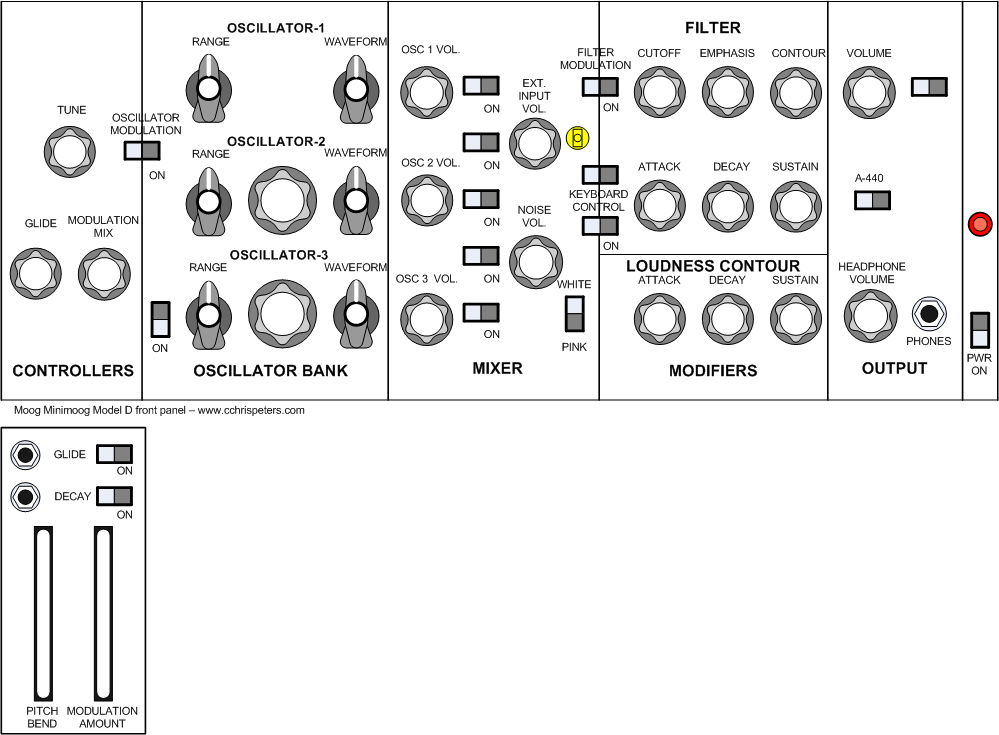Moog's most successful non-modular integrated synthesizer was inspired by requests from customers to make an instrument that was smaller, cheaper and less complex. The MiniMoog series prototypes were originally developed by Moog's engineering staff using spare parts from larger modular instruments. Towards the beginning of the 1970''s Bob Moog realized that he was at the end of selling big modular instruments and needed a product that would save his company. Unfortunately he had to sell Moog Music before the MiniMoog Model D became a financial success.
Early Moog oscillators were not temperature compensated well and never really stayed in tune for with themselves for long. Because of this, they became famous for their characteristic heterodyning or rolling chorus effect which was later described as sounding "fat". The MiniMoog does not have a dedicated low frequency oscillator. Instead it uses its third audio oscillator switched to sub audio range as a modulation source for creating vibrato and tremolo effects. The most sought after feature of the MiniMoog is its distinctive sounding 24 dB low-pass "ladder" filter, something that ARP allegedly copied and used in their ARP 2600 and Axxe instruments. The original MiniMoogs use S-trigs which are different electrically than the standard voltage triggers used by ARP, Oberheim and other analog instrument manufacturers. The MiniMoog was the first synthesizer to have left hand wheel controllers for pitch bending and modulation functions.
MiniMoog Features:
- 3 voltage Controlled Oscillators
- 1 Noise Generator
- 1 Low-pass Filter
- 2 Envelope Generators
- 1 Voltage Controlled Amplifier
- 2 Controller Wheels
